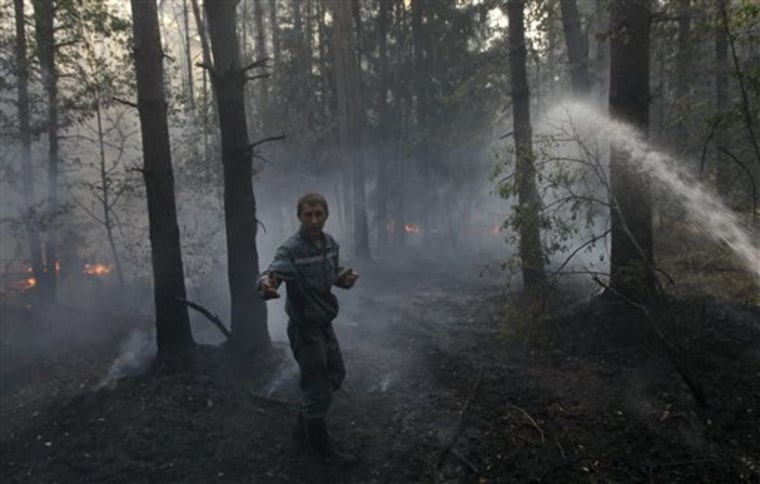The poisonous smog that contributed to a higher death rate in Moscow last week returned to Russia's capital Sunday, officials said.
The concentration of carbon monoxide in Moscow air early Sunday was more than five times what is considered normal, said Alexey Popikov of weather monitors Mosecomonitoring.
In addition, "The level of hydrocarbon emissions — the substances that give the air this unpleasant smell — was 5.5 times higher than the usual Moscow level this morning," he told The Associated Press. He added, however, that by Monday winds will disperse most the smog.
Acrid smoke from forest and peat bog fires blanketed Moscow until early this week, nearly doubling the number of recorded deaths and grounding planes in airports.
Emergency officials said the number of wildfires outside Moscow stood at 16 early Sunday.
Muscovites expressed disappointment with official efforts to stop the fires.
"I thought this nightmare was over, but here we go, it's back," said 28-year old graphic designer Mikhail Talalikhin. "Our mayor once pledged to stop snowfall, why doesn't he start by making rain?"
Moscow Mayor Yuri Luzhkov said in October that he would use planes to intercept advancing storm fronts and hit them with dry ice and silver iodine particles.
Officials warned that fires still rage in a national park near one of Russia's largest nuclear research facilities in Sarov, 250 miles east of Moscow.
"The fire threatens Sarov as long as the Mordovsky (national park) is burning," the head of the national nuclear agency, Sergei Kiriyenko, told RIA Novosti news agency. He added, though, that some 3,000 firefighters working in Sarov made sure that the danger is "no longer critical," RIA Novosti reported.

This summer is the hottest since records began in Russia 130 years ago. Daily highs have reached up to 100 degrees Fahrenheit, compared with the usual summer average of 75.
Wildfires have raged across central and western Russia. More than 50 people have died in the wildfires and more than 2,000 homes have been destroyed.
Fires together with drought have cost Russia a third of its wheat crop, prompting authorities to ban wheat exports.
Scientists say the heatwave reflects the global climate's increased volatility.
